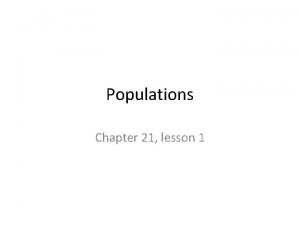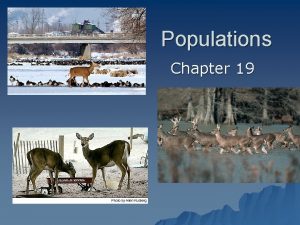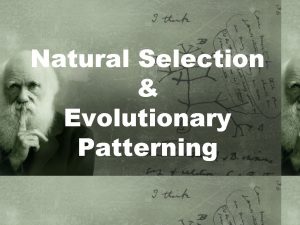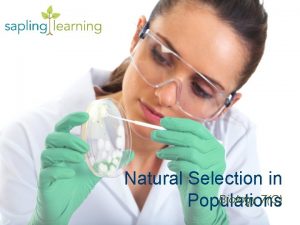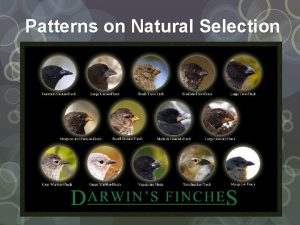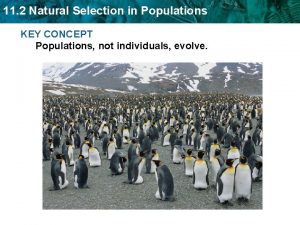11 2 Natural Selection in Populations KEY CONCEPT







- Slides: 7

11. 2 Natural Selection in Populations KEY CONCEPT Populations, not individuals, evolve.

11. 2 Natural Selection in Populations Natural selection acts on distributions of traits. • A normal distribution graphs as a bell-shaped curve. – highest frequency near mean value (MEAN VALUE IS THE AVERAGE VALUE) – frequencies decrease toward each extreme value v SO…EXTREME VALUES LIE TOWARD THE BOTTOM OF EACH SIDE OF THE TOP • Traits not undergoing MIDDLE MEAN/AVERAGE natural selection have a VALUES normal distribution.

11. 2 Natural Selection in Populations • Microevolution is evolution within a population from generation to generation – observable change in the allele frequencies – can result from natural selection

11. 2 Natural Selection in Populations Natural selection can change the distribution of a trait in one of three ways. 1) Directional Selection 2) Stabilizing Selection 3) Disruptive Selection These types of selection shifts cause a certain phenotype trait to become more common in the population

11. 2 Natural Selection in Populations 1) Directional selection favors phenotypes at one extreme of a trait’s range causing it to shift in that direction.

11. 2 Natural Selection in Populations 2) Stabilizing selection favors the intermediate phenotype leading to a decline of extreme phenotypes and possibly extinction.

11. 2 Natural Selection in Populations 3) Disruptive selection favors both extreme phenotypes. • Favoring both extreme phenotypes can lead to development of new species thru speciation
 Similarities
Similarities Natural selection vs artificial selection
Natural selection vs artificial selection Difference between continuous and discontinuous variation
Difference between continuous and discontinuous variation Example of stabilizing selection
Example of stabilizing selection Natural selection vs artificial selection
Natural selection vs artificial selection Lesson 1 populations answer key
Lesson 1 populations answer key Section 19-1 review understanding populations answer key
Section 19-1 review understanding populations answer key Section 5-1 how populations grow answer key
Section 5-1 how populations grow answer key





